Japan tried some insane sh*t in its effort to win World War Two. Going into the war, Japanese military leaders realized that defeating the United States would be difficult. Although the U.S. was in the midst of depression and had shuttered many of its factories, Japan knew that once war broke out, the Americans would quickly fire up their assembly lines and begin producing weapons of war. This would be a problem for the Japanese because they couldn’t compete with American industry in a drawn out conflict.
To defeat the United States, then, the Japanese would have to strike hard and fast. Completely destroy the U.S. military in the Pacific before the full might of America 's industry could come to bear. Give Japan such a significant head start that the U.S. would be unable to catch up and would surrender its colonies in the Pacific. Japan hoped to bring about this quick victory by: launching the war with a surprise attack on the U.S. fleet at Pearl Harbor, taking America bases in the Philippines, capturing strategic Pacific islands for airfields, and setting up a defensive sphere around mainland Japan.
Unfortunately for the Japanese, things didn 't go according to plan. When Japan started hostilities on December 7, 1941 with a surprise attack on Pearl Harbor, its navy destroyed much of the American Pacific fleet, but failed to sink any U.S. aircraft carriers. Although Japanese forces captured the Philippines, the fighting was costly and time consuming. The defensive sphere around Japan proved fallible, as American bombers were able to shell Tokyo within months of the start of the war. In an attempt to shore up defenses, then, the Japanese then fell into a trap at Midway Island, losing four aircraft carriers in a lopsided battle.
By the end of 1942, it was clear to the Japanese that their plan had fallen apart. They had not had the overwhelming early victories necessary to set back the U.S. war machine. American factories were pumping out planes and ships, and Japan couldn 't come close to matching their production. Japanese leaders realized they would need something that could singlehandedly turn the tide of the war in their favor. A crazy invention or idea that would negate the U.S. industrial advantage. They needed the World War 2 equivalent of a Death Star. From 1942 to 1945, Japan tried some crazy sh*t to win World War 2. Here 's the craziest of said sh*t.
7. Kamikaze Planes
Most people know about the king of the insane Japanese weapons: the kamikaze plane. In 1944, with the American navy closing in, Japanese leaders realized that they needed a more cost effective means of sinking enemy naval ships. The Japanese surface navy was in shambles and was at a disadvantage in ship-to-ship combat. Japan 's submarines could destroy enemy merchant ships but stood little chance against a flotilla of armed vessels. Japan would have benefited from surface to ship missiles, but the nation lacked the rocket technology and guidance computers needed for such weapons. Although Japanese planes could occasionally penetrate American defenses long enough to drop bombs on an enemy ship, the small explosives rarely inflicted severe damage. The Japanese needed a way to deliver ordinance quickly and effectively. With this in mind, higher-ups in Japan 's military decided to load fighter planes with explosives and tell some poor kids to fly their planes into American ships.
From October 1944 to August 1945, Japan sent 4,000 aviators to their deaths as kamikaze pilots. Beginning at the Battle of Leyte Gulf and culminating at the Battle of Okinawa, Japan began pummeling American ships with human-piloted missiles. Although gunmen aboard U.S. vessels were able to shoot down a number of the planes before they reached their marks, many kamikazes penetrated the gunfire and hit their targets with explosive results.
Although less than 20 percent of kamikazes managed to hit a ship and an even smaller number actually sunk a ship, the planes made a significant dent in the U.S. fleet. Kamikazes destroyed around eighty navy vessels, including fourteen expensive destroyers. An additional 200 ships were damaged by the suicide attacks. Kamikazes especially crippled U.S. carriers by rendering their decks incapable of launching planes. Almost 5,000 U.S. service members lost their lives in kamikaze attacks.
Many historians argue that kamikazes could have delayed or even prevented a U.S. victory had Japan used them earlier. Fortunately for American sailors and a generation of Japanese teenagers, kamikazes were only around for the last year of the war.
While it doesn 't get much more wheels off than rocket made up of a human and a bunch of dynamite, the kamikaze plane wasn 't the only insane weapon that Japan tried to use against U.S. forces in the Pacific. Hell, it wasn 't even the only kamikaze vehicle, the Japanese also used:
6. Kamikaze Subs
The most uncreative guy at Japanese headquarters apparently heard about the kamikaze idea and at the next meeting of military leaders asked, 'What about human torpedoes? Instead of planes, let 's put some guys in a submarine and point them in the direction of a U.S. ship. ' The idea went over well and soon Japan was strapping a 3,400-pound warhead to a 50-foot tube and asking for volunteers to crew 1-4-man suicide submarines, called kaitens.
In 1944, Japan began deploying the kaiten submarines against the American navy near Leyte Island. Larger submarines carried the small craft and their crew into battle and upon seeing a U.S. ship, released them. The kaiten 's crew then breathed out of oxygen tanks, while the pilot used a periscope to guide the vessel in the direction of the target. Once alongside an American vessel, the kaiten crew exploded their warheads. Although the first wave of kaitens managed to sink one of their targets, all of the kaitens and one of the kaiten-carrying submarines were lost.
Kaiten 's sucked. They only sunk three enemy ships and killed 187 U.S. sailors from 1944 to 1945. Even though one of the sunk ships was an expensive destroyer, United States financial and human loses did not come close to what Japan spent in pursuing the kaiten project. In addition to the 106 kaiten pilots that lost their lives, a number of men died while building kaitens. Other perished training kaiten crews.
Japan 's biggest losses in the kaiten project, however, came from Americans sinking kaiten-carrying submarines after kaiten attacks. After the assault at Leyte Island, the U.S. navy realized that kaitens were incapable of traveling long distances by themselves, so whenever a kaiten was used, the navy swept the area for the submarine that had carried it into battle. These sweeps led to the destruction of eight Japanese submarines and the death of over 800 Japanese sailors.
5. Submarine Aircraft Carriers
The Kamikaze submarines weren 't even the most wild-ass submarines used by Japan in WW2. Near the end of the war, the Japanese had lost most of their carrier fleet. The carriers that survived couldn 't go far from Japan, otherwise the American navy would detect them and send a fleet to destroy them. This allowed the U.S. to get lax. With no aerial threat to bases far from Japan, the Americans were able to redirect defensive personnel and equipment to the offensive front.
Japan hoped to slow the American advance by deploying submarine aircraft carriers. Aware that the U.S. navy had gained the advantage on the surface, Japan began expanding its subsurface fleet. One admiral had the idea of making submarines that could surface and catapult seaplanes for bombing runs. Japanese higher-ups approved the project and submarine aircraft carriers went into production in January 1943. This opened the entire Pacific to Japanese aerial attack.
Although the Japanese developed dozens of submarines capable of carrying airplanes, the biggest and most effective of these was the I-400. Weighing more than 6,500 tons and over 400 feet in length, the I-400 was twice as fast as any U.S. sub, 60 percent bigger than any U.S. sub, and it could travel around the world one and a half times without refueling. Its main feature was that it carried three seaplanes in a launch tube on top the submarine, which could be airborne within 45 minutes of the submarine surfacing.
The Japanese had to be creative with their I-400s, as there were only three of them in 1945. A large-scale attack on a navy base was out of the question. The I-400 's three planes could only carry a limited amount of explosives, they were fragile, and they would be blown from the sky in aerial combat. Japan, therefore, had to use its I-400s and their planes for quick, tactical strikes.
The Panama Canal made a perfect target. One or two well-placed bombs could destroy the canal and significantly increase travel time from the U.S. East Coast to the Pacific, hurting the American war effort. In the last weeks of the war, an I-400 departed for such an attack on the canal, but stopped when word came that the Japanese government had surrendered to U.S. forces.
4. Flea Bombs
In addition to attacking the Panama Canal, the Japanese planned to use their I-400s for an even more sinister purpose: they wanted to drop bombs on the American West Coast. Bombs filled with fleas carrying the bubonic plague, cholera, and typhus.
Shortly after Japan invaded China in 1937, it began using germ warfare on the Chinese population. Japanese scientists intentionally infected Chinese civilians with communicable disease by contaminating water supplies and poisoning candy to give to Chinese children. The scientists, however, found that these methods were too slow and inefficient to dispense disease over a large population. Disease-carrying fleas, on the other hand, could spread out and rapidly pass an infection from one carrier to the next. To get these fleas to the Chinese population, Japanese scientists developed a ceramic bomb that 'when dropped from a plane 'would break open above the ground and rain fleas on unsuspecting people below. These flea bombs were used in areas of China not occupied by Japanese troops, and it is believed that tens of thousands of Chinese died of diseases that the fleas were carrying.
If Japan used its flea bombs on heavily populated San Francisco, Los Angeles, or San Diego high civilian casualties would follow. Fortunately for those living in these cities, the Japanese didn 't perfect the bomb until the last years of the war when their carriers would be unable to cross the Pacific without being destroyed by the U.S. Navy. Japanese submarines didn 't have deck guns big enough to launch the flea bombs, and it 's doubtful that the fleas would have survived being fired in such a manner even if they did. Near the end of the war, however, Japan did have its I-400s. These submarines could surface, launch seaplanes carrying flea bombs, drop them on U.S. cities, and then retreat to Japan.
What stopped the Japanese from using their flea bomb carrying I-400s on the U.S.-West Coast? A crisis of conscious, fear of being tried for war crimes, and the realization that any neutral nation in the world would join in fighting Japan if it used germ warfare on the United States. By the time the I-400s were up and running, most Japanese military leaders realized that they were probably going to lose the war. The flea bombs wouldn’t prevent defeat, but their use would mean that everyone that had had anything to do with the flea bomb would face execution for war crimes.
3. Hot Air Balloon Bombs
The I-400 wasn 't Japan 's only hope for hitting America 's West Coast. In late 1944 and early 1945, Japan launched 9,000 hydrogen balloons carrying firebombs and anti-personnel shells into the atmosphere. The hope was that the bombs would float on the Pacific trade winds towards the United States where they would explode either in heavily-populated urban areas, causing civilian casualties, or in the densely wooded Pacific Northwest, where the incendiary bombs would ignite wildfires.
Thing was, the balloons didn 't have a navigation system. The Japanese were relying on luck and a misunderstanding of the mechanics of hot air balloon ballast for the balloons to reach America. As such, most of the bombs fell into the sea before they could complete their trans-Pacific voyage. A handful of the balloons made it to the United States but caused no damage. Many bombs didn 't explode. Firefighters were able to suppress the fires created by those that did. In addition, emergency personnel did an excellent job of keeping civilians away from bombs when they landed.
Except for one. Although Japan 's hot air balloon bombs were a dismal failure 'costing Japan heavily in money and man-hours 'they do hold one historical distinction: they were the cause of the only civilian deaths within the United States during the course of the war. In May 1945, Elsie Mitchell and five children from her husband 's Sunday school class went into an Oregon forest to have a picnic. When one of the children discovered a balloon, Elsie and the rest of the kids gathered around to investigate. Somehow, the bomb was triggered, killing Elsie and the five children. While Russia lost 20 million civilians on its soil during the war, the U.S. lost only these six people to an errant balloon bomb.
2. Flying Aircraft Carriers
Japan had one more trick to threaten targets distant from Japan at the end of the war: an airplane aircraft carrier. Many nations had attempted to build airborne aircraft carriers before WW2, but they all ran into the same problem: it was easy to launch an aircraft from a larger plane or a zeppelin, but it was almost impossible for said plane to return to its mother vessel. The pilot would have to land his plane in enemy territory or eject and hope that friendly forces picked him up.
Japan didn 't need to worry about such a problem. Once the nation decided to pursue kamikazes, they wouldn 't have to worry about what was going to happen to a pilot and his plane after it left an airborne aircraft carrier. They knew what was going to happen. With this in mind, Japan began converting some of its long-range heavy bombers into aircraft carriers. They designed these G4M2s to carry a single fighter into battle and once close to an enemy target, the G4M2s would release their kamikazes.
The Japanese even developed special kamikazes vehicles for the G4M2s to bring into battle. Called Okas, these kamikazes were gliders, not planes. To save cost and to decrease weight so the G4M2s could get airborne, Japanese scientists didn 't install an engine in Okas, instead putting a warhead where the engine would normally be. Essentially, the Okas were missiles with humans as targeting computers.
In March 1945, the Japanese deployed their kamikaze-carrying aircraft against a U.S. fleet near Okinawa. The results were disastrous for Japan. Because Okas weighed more than the normal payload of a Japanese bomber, the G4M2s moved slowly. This was a problem because 'owing to the Okas lack of an engine 'the G4M2s had to get close to the American fleet before they could release their kamikazes. The U.S. fleet detected the incoming bombers well before they were in range to release their kamikazes and deployed fighters to intercept them. The American fighters easily shot down every G4M2 with their Oka cargo still on board. The airplane aircraft carrier failed before it could even be tested in battle.
The Japanese attempted to increase the range of their Okas by adding a jet engine to the back of the craft, but the vehicle proved unmanageable for pilots. Before the end of the war, with the U.S. having destroyed most of their bombers, the Japanese attempted to strap floats to the sides of their Okas to make them into kamikaze torpedo boats, because apparently someone said, 'hey, why not. We 've tried everything else up to this point. ' These floating Okas were never used before the war ended.
1. Samurai Swords
While all of these weapons were pretty insane, they all, at least, had some prospect of successfully killing more enemy soldiers than Japanese soldiers. This last item did not: samurai swords. Now, swords are not an insane weapon, per se. In fact, swords are probably the least crazy weapon of all time. It 's an efficient means of killing a person in close combat. Thing is, the Japanese were using these swords in a war severely lacking in close combat. World War Two featured a 1,350 ton artillery gun that could launch seven ton shells, aircraft careers with 3,000-man crews, machine guns that could fire nearly 1,000 rounds a minute, and two nuclear bombs, yet the Japanese used swords. A lot.
During numerous battles in the war, the Japanese found themselves surrounded by American forces. Unable to escape, the Japanese threw down their guns, drew samurai swords, and rushed U.S. positions. The results of these banzai attacks were usually predictable: few American casualties, almost every Japanese soldier dead.
Why did the Japanese resort to a banzai charge when maintaining a defensive posture would be much more practical and cause more enemy dead? Part of this owes to propaganda. The Japanese government pushed the idea of the Samurai Bushido code, which, among other things, said that it was better to die than to suffer the humiliation of defeat. Japan 's promotion of the Bushido code made some sense: it could get soldiers to do crazy things 'see every kamikaze thing listed above 'that soldiers from other nations would not do.
The Bushido code explains why Japanese soldiers were willing to die, but it doesn 't explain why Japan would use a tactic that would result in more of its men dying than its enemy. To explain banzai attacks, then, it is necessary to look at Japan 's war with China. When the Japanese invaded China, Japanese soldiers were frequently able to overrun enemy positions with banzai attacks because the Chinese used bolt-action rifles that took time to reload. By the time Chinese soldiers could bring their weapons to bear on the incoming Japanese, they were already within range of a samurai blade.
Although banzai charges worked against China and their outdated guns, they failed against Americans with their semiautomatic M1 Garands and automatic Thompson machine guns. When Japanese soldiers ran at American positions, as they did at Guadalcanal and the Philippines, U.S. soldiers and marines were able to fire off multiple shots before having to reload. One American using a standard issue Garand could kill ten of the oncoming enemy before a single Japanese soldier could cross a 100-yard battlefield.
Even 'successful ' banzai attacks cost Japan heavily in lives. During the Battle of Saipan in 1944, a few Japanese soldiers in a banzai attack managed to cut past the streams of machine gun bullets, overrun U.S. lines, and inflict heavy casualties. Although there were 650 dead or wounded Americans after the Saipan banzai charge, well over 4,000 Japanese lay dead. A similar banzai charge at the Battle of Attu led to over a hundred American casualties, but at a cost of 3,000 dead Japanese. And these were some of the most successful banzai charges.
Japan had a smaller population than its enemy in WW2. They could not win a war of attrition, yet that 's what it seemed like they were trying to do with their banzai charges. For every American soldier killed, the Japanese lost some ten men in these suicide attacks. Japan couldn 't keep up those numbers even if the nation had had a larger population than the United States, which it did not. By the time Japanese leaders realized that banzai attacks were ineffective, they 'd already lost tens of thousands of men using the tactic. Men they couldn’t afford to lose.
Japan never found its Death Star. Something that would turn the tide of the war in their favor. No special tactic or weapon that could negate the United States’ superior military and industrial might. The only thing that may have helped Japan win the war was a nuclear weapon, but Japan never developed nuclear technology. The U.S. did. It used nuclear weapons against Japan on August 6 and 9, 1945 to devastating effect. Realizing that they could not challenge an enemy with such a super weapon, the Japanese surrendered on August 14.
Brad Folsom
Coming soon to HistoryBanter.com
Why We Don’t Have an Avengers Helicarrier: The U.S.S. Akron
The Six Most Insane U.S. Weapons of WW2
The Six Most Insane German Weapons of WW2




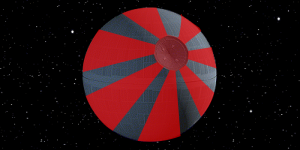
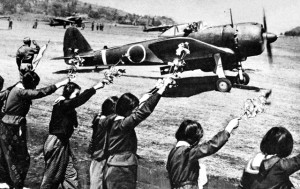
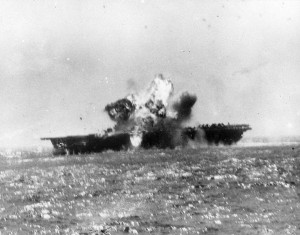
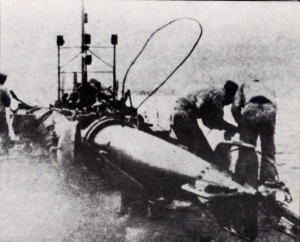
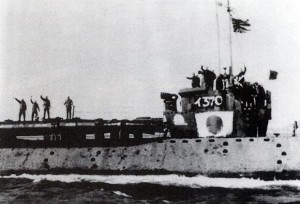
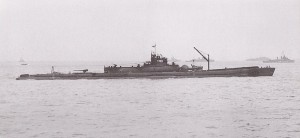

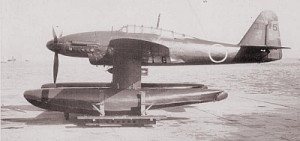


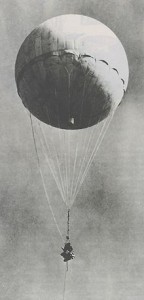


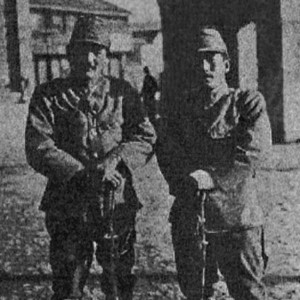




That’s my type of story!